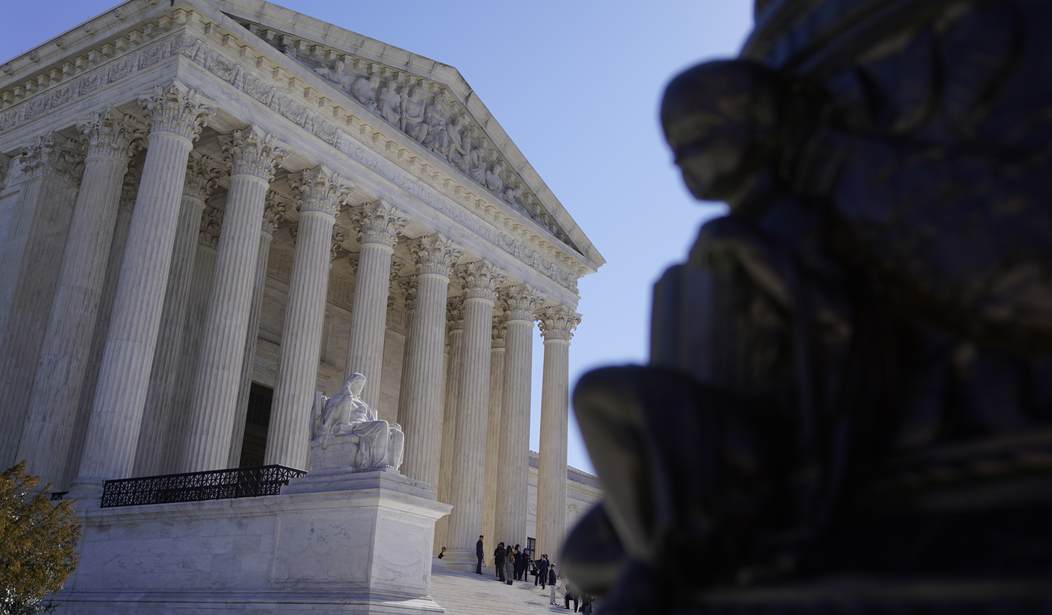We don’t know at this point who leaked the Supreme Court draft opinion overturning two major abortion decisions, but we do know that this “suicide bomber,” as a former law clerk called them, is guilty of obstruction of justice and, in the words of another former law clerk, “violat[ed] like, ten different procedures.”
Mike Davis, a former law clerk for Supreme Court Justice Neil Gorsuch, and who worked with the Senate Judiciary Committee on judicial nominations, spoke with me on KTTH radio and said, “You’re supposed to be dealing with the youngest, smartest, young lawyers and law grads in the country, and they have ethical obligations as young lawyers, future lawyers.” Davis, who now leads the Article III Project, said each law clerk signs agreements with the Court not to snitch. Plus, he told me, “There are federal statutes that prevent the misuse of federal property; there are federal statutes that prevent obstruction of justice.”
The chain of custody system for documents is intricate and inviolate, that is until a person decides they’re bigger than the Supreme Court’s integrity and violate it.
“The Supreme Court has an intranet system,” Davis continued, “that’s not connected to the internet when it comes to circulating drafts like this to prevent hacks and leaks like this, so this leak is bad in a lot of ways.” He says it endangers all the justices, but especially ones whom Politico reported had not signed on to the majority opinion. That number includes Chief Justice John Roberts.
Worse, Sen. Mike Lee (R-Utah), who was a law clerk for Justice Alito, the author of the majority draft opinion, says the leaker defeated several procedures put in place to keep documents from prying eyes and political saboteurs.
“When I was a law clerk, every law clerk had a burn bag next to his or her desk,” he told radio host Dan Bongino. “And in the rare moment when you need to print out a draft opinion, often you didn’t need to, you got a separate, secure system, not connected to the internet, inside the court, allowing us to exchange and edit drafts without any internet connection – no risk of leaks there,” he explained.
But, Lee said, “the rare moment when you actually needed to print one, rather than making edits on your computer, there was a set of procedures that would accompany that.” Of course, “you’re not supposed to take them home, you’re not supposed to leave the building with them, when you’re finished with them you don’t put them in the wastebasket you put ’em in a burn bag.” And here’s what remarkable things happen to the contents of that burn bag. “The burn bag at the end of the day is collected by court personnel who take the burn bag and its contents and draft opinions,” he explained. “They shred them. Twice. Vertically and horizontally, turning it into confetti.”
So far it seems normal, but “even then you take that confetti and they put it into an incinerator and burn it and mix it into a slurry with water so that it can’t possibly be read. Only then does it leave the custody of the Supreme Court of the United States.” The outraged senator said this political saboteur committed “a real feat. This is a person who is violating, like, ten different procedures.”
Let’s list those again in bullet point fashion:
- Rarely a paper document is created.
- The document cannot leave the building.
- It is supposed to be put in a burn bag.
- The burn bag is collected each day.
- The contents of the burn bag are shredded at least twice (at least it was when Lee was a clerk).
- The shredded mass is burned in the incinerator.
- What’s left is mixed with water into a slurry.
- That slurry can ten leave the custody of the Supreme Court.
The leaker obviously took photos of the document and scanned them, giving them to Politico, which splashed it on the front page of its website.
So in addition to violating the canon of ethics and breaking all written and spoken vows of secrecy and confidentiality, the leaker defeated at least eight security steps to secure confidential government documents.
You might be thinking, oh sure, news outlets leak government documents all the time. But Davis cautions this is different. This shakes the foundation of a third of our government. This “hurts the judicial independence of the Supreme Court. It puts sitting justices in grave danger because people know who’s voting which way and who’s up for grabs. They’re getting death threats right now.”
Furthermore, he says, this leak will backfire on the leaker. “The problem with what this person did by leaking the opinion was they just used all their ammunition already,” he theorized. “They blew up — it’s like a suicide bomber — they blow up in front of the Supreme Court, and you know at that point what is there to preserve? They’ve already caused this grave damage to the legitimacy, to the independence, of the supreme court by doing this … ”
The Washington Post reports that it’s doubtful the feds will prosecute the leaker. That’s hard to believe considering what’s at stake. Plus, that which is rewarded is repeated.
Chief Justice Roberts turned the case over to the Supreme Court Police. They could bring in the U.S. Marshals Services.










Join the conversation as a VIP Member